Discover 11 hidden attractions, cool sights, and unusual things to do in Trabzon (Turkey). Don't miss out on these must-see attractions: Hagia Sophia, Kalepark, and Trabzon Museum. Also, be sure to include Fatih Mosque in your itinerary.
Below, you can find the list of the most amazing places you should visit in Trabzon (Trabzon).
Table of Contents
Hagia Sophia

Also known as: Trabzon Ayasofya Müzesi
Museum in Trabzon, Turkey. Hagia Sophia is a formerly Greek Orthodox church which was converted into a mosque in 1584, and located in Trabzon, in the north-eastern part of Turkey. It was converted into a museum in 1964 and back into a mosque in 2013. It dates back to the thirteenth century when Trabzon was the capital of the Empire of Trebizond. It is located near the seashore and two miles west of the medieval town's limits. It is one of a few dozen Byzantine sites extant in the area. It has been described as being "regarded as one of the finest examples of Byzantine architecture."[1]
Address: Fatih Mahallesi, 61040 Ortahisar
Kalepark
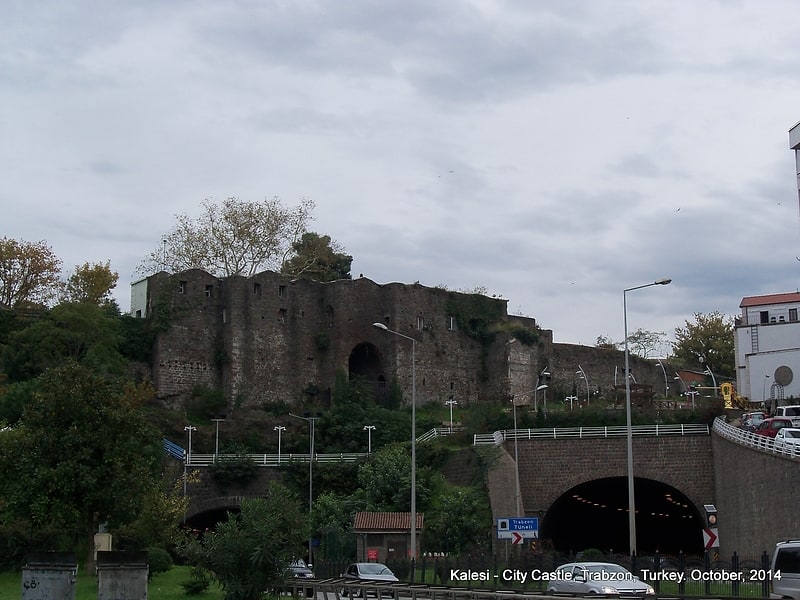
Kalepark was procured and further fortified by Genoese merchants as a medieval fortress on the east side of Trabzon, Turkey. The fortress was built on a rocky outcrop strategically overlooking both harbors of the city: the summer harbor at a distance to the west, and the winter harbor just to the east of it. A few hundred meters to the west of Leonkastron lay the "Venetian Castle", which was a competing fortified trading outpost. In the following centuries many other Europeans settled on the streets between these forts - such as traders from Lviv in Ukraine - and it thus became known as the "European quarter".
In the 1740s, a palace was built for the Ottoman Governor Ahmet Paşa at the same location, which was destroyed by a fire in 1790.
The castle was frequently shelled during World War I by the Russian naval forces, due to its easily accessible location near the Black Sea coast.[2]
Trabzon Museum

Also known as: Trabzon Müzesi
Regional artifacts in a 1900s mansion. The Trabzon Museum, also known as Kostaki Mansion, is a historic house museum with archeological and ethnographic exhibitions located in Trabzon, Turkey.[3]
Address: Gazipaşa Mahallesi, Zeytinlik Cd. No:7, 61030 Trabzon Merkez
Fatih Mosque
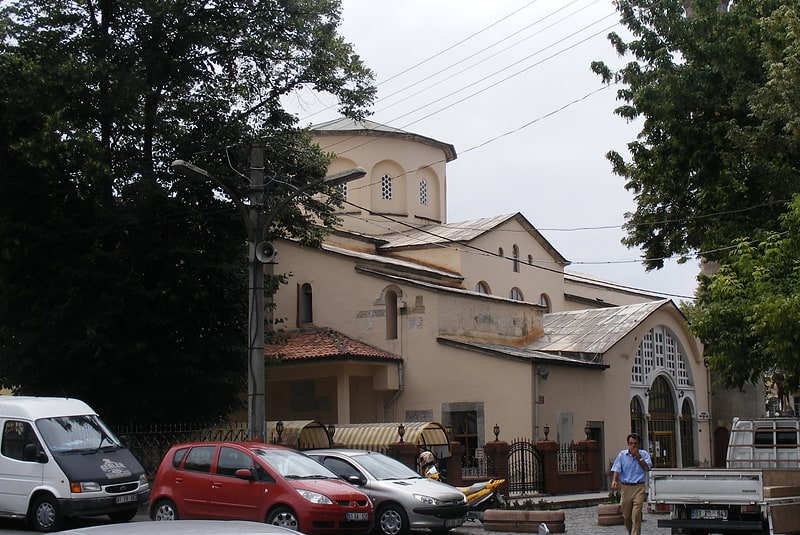
Also known as: Fatih Camii
Mosque. The Fatih Mosque is a mosque in Ortahisar district of Trabzon Province, Turkey. It was originally built in Byzantine times as the Panagia Chrysokephalos Church, serving as both the catholicon for the see of Trebizond, and a church for a monastery. It was built sometime in the 10th or 11th century. After Ottoman conquest of the city in 1461, the building became a mosque. The Fatih Mosque also displays the most beautiful samples of the Ottoman writing arts.[4]
Address: Ortahisar Mahallesi, Fatih Cami Sk. No:1, 61030 Ortahisar
Kaymaklı Monastery
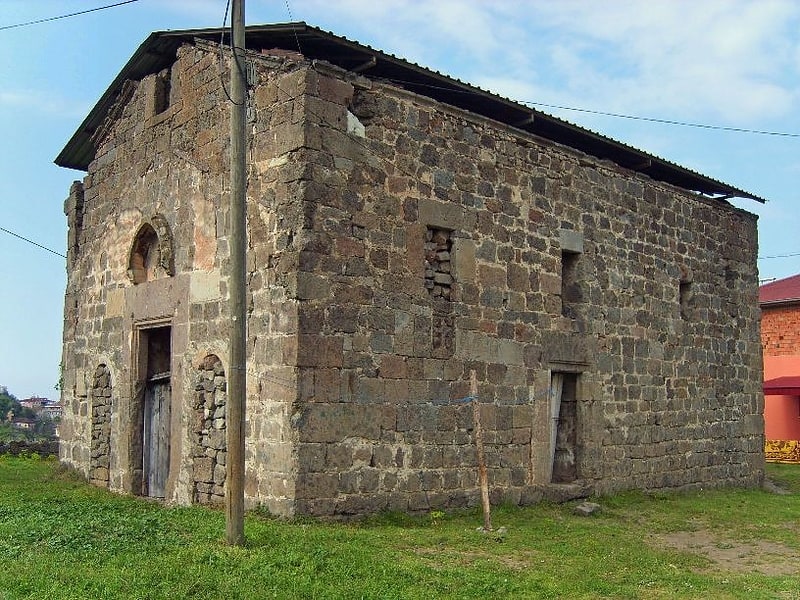
Also known as: Amenapırgiç Manastırı
Monastery in Turkey. Kaymaklı Monastery is a ruined Armenian Apostolic monastery near Trabzon, Turkey.
The monastery originally included a church, a bell tower at the northwest corner, and a small chapel near the southeast corner.[5]
Address: Kaymaklı Mahallesi, 204. Sk. No:3, 61100 Trabzon Merkez
New Friday Mosque

Also known as: Yeni Cuma Camii
Mosque in Trabzon, Turkey. The New Juma Mosque is a mosque in Trabzon, Turkey. It was built during Byzantine times as the Hagios Eugenios Church, dedicated to Saint Eugenius, the patron saint of the city. Following the capture of the city by Sultan Mehmed the Conqueror in 1461, like many churches in that city it was converted to a mosque.
It is not known exactly when the church was built, however researchers consider that it was a basilica. An inscription dated 1291 has been found near it. However, during the siege of Trebizond in 1222, Sultan Melik, enraged at the resistance of the city's inhabitants, is said to have ordered the upper walls torn down and the floors broken and pulled up, so it is likely the present structure was built in the years immediately afterwards.
Jakob Philipp Fallmerayer, who visited Trebizond in the early 19th century, reports that he saw remains of paintings of the Emperors of Trebizond from Alexios I to Alexios III inside, each with an inscription giving the title and name of the subjects; although by the time Gabriel Millet inspected the building, the inscriptions had disappeared, Millet confirmed traces of the paintings remained to the left of the entrance: "one person wearing the loros; another seems to hold a scepter; to the right, a third kneels, presenting an object, no doubt the church which he founded, to a saint seated and dressed like a martyrs, in Byzantine costume."
The present building has no narthex today, but there are three naves. The middle apse is rounded on the inside and pentagonal on the outside. The minaret was added at the area around the north door of the church, which was turned into a mosque after the Ottoman conquest in 1461. The stone mihrab (altar niche) is of baroque style, and the mimber (pulpit) is of wood with no ornamentation.[6]
Address: Yenicuma Mahallesi, 61030 Ortahisar
Kızlar Monastery
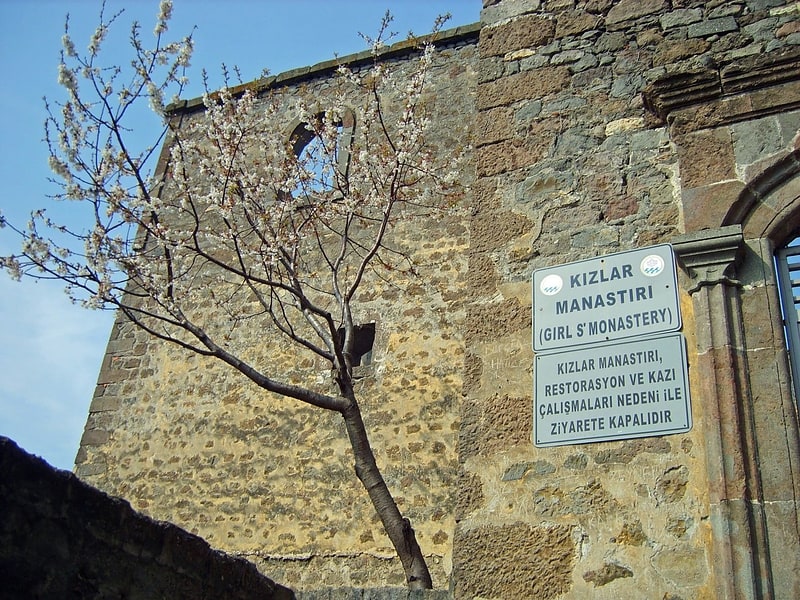
Monastery in Trabzon, Turkey. The Panagia Theoskepastos Monastery, today known in Turkish as Kızlar Monastery, is a former female monastery built during the Empire of Trebizond.
It lies at the foot of Boztepe mountain over looking the city of Trabzon. The monastery complex built on two terraces, is surrounded by a protective high wall. The monastery was founded in the reign of Alexios III (1349–1390). Having undergone major repairs several times it assumed its present form in the 19th century. The monastery initially comprised the rock church on the south side the chapel in its entrance and a few cells. Inside the rock church there are inscriptions and portraits of Alexios III, his wife Theodora and his mother Irene.[7]
Address: Desen Sokak and Mht. Coşkun Karaağaçlı Cd. corner, Boztepe Mh., Trabzon, Trabzon
Walls of Trabzon

Also known as: Trabzon Kalesi
Fortress in Trabzon, Turkey. The Walls of Trabzon are a series of defensive walls surrounding the old town of the city of Trabzon, northeastern Turkey. The fortifications are sometimes called the Trabzon Castle. However, they did not function as a castle, rather as city walls. Constructed on foundations dating back to the Roman era with cut stones from former structures at site, the walls stretch from the hill on the backside of the old town to the Black Sea shore. The walls further divided the city into three parts; the Upper Town or "fortress", the Middle Town and the Lower Town. The upper and middle towns are flanked by steep ravines cut by the Zagnos and Tabakhane streams to the west and east respectively, while the lower town extends to the west of Zagnos.
The Upper Town functioned as the citadel and as the acropolis of the city. It is believed that the citadel was built as the first construction in 2000 BC. Some early sources mention the existence of ruins of structures such as hippodrome, tower, bath and palace. The citadel underwent various modifications in the history. The walls of the Upper Fortress are higher than of the other parts. It is fortified in the south with higher and thicker walls and towers. During the Roman period an aqueduct was built to supply the Upper Town with a freshwater source. The Upper Town was accessible through a double gate with the Middle Town. The imperial palace of the Empire of Trebizond was located in the Upper Town. After the surrender of the city to Ottoman forces a small mosque was built next to the palace. Some epigraphs from Ottoman era, which were found between the citadel walls, can be seen in Trabzon Museum.
The Middle Town, which was built by Alexios II of Trebizond (reigned 1297–1330), is the continuation of the upper and lower parts. It has no regular form. Its two gates, Imaret Kapı (literally: Alms Kitchen Gate) and Zağanos Kapı (Zaganos Pasha Gate) are situated in the west. It has two more gates at other sides, Tabakhane Kapısı (Tannery Gate) and Kule Kapı (Tower Gate). Notable buildings found here are Orta Hisar Mosque (Panagia Chrysocephalos Church), Governor's mansion, Zağanos Bridge, Kule Hamamı (Tower Bath), Çifte Hamma (Twin Bath), Amasya Mosque, Şirin Hatun Mosque and Musa Pasha Mosque.
The Lower Town stretches in the west from Zağanos Tower down to the sea. Also this part of the fortifications were built by Alexios II of Trebizond. However, an inscription with the tughra of Ottoman sultan Mehmed II (reigned 1444–46 and 1451–81) is situated above the gate in the Moloz Tabya (literally: Rubble Bastion). In the east, there are two gates, Pazarkapı (Marketplace Gate) and Mumhane Kapı (Chandlery Gate). Historical buildings around the Lower Fortress are Molla Siyah Mosque (St. Andreas Church), Hoca Halil Mosque, Pazarkapı Mosque, Kundupoğlu and Yarımbıyıkoğlu manions, Sekiz Düzenli Hamam (bath), Tophane Hamamı (bath), Hacı Arif Hamamı (bath) and İskender Pasha fountains.
The most of the city walls are still standing and are among the city's oldest buildings. In fact, their oldest part can be dated back to 1st century AD during the Roman Empire era. Historical sources provide information about older stages of their construction. Xenophon, who visited the city in 5th century BC also mentioned the existence of city walls.
In 1921, some of the remaining Christians of the city were ordered by the municipal authorities to dismantle the stone of the Comnenos era fortress and use the rubble for road building.
During the 20th century the valleys on both the western and eastern sides of the middle and upper towns were built up with illegal constructions, in some cases obstructing the view of the walls. In the last two decades the municipality of Trabzon has initiated a series of redevelopment projects surrounding the old town. As of 2017 the western Zagnos valley has been turned into a park with unobstructed view of the walls and aqueduct, and the illegal constructions in the eastern Kuzgun (or Tabakhane) valley have been torn down. Kuzgun valley will eventually also be turned into a park.[8]
Saint Anne Church
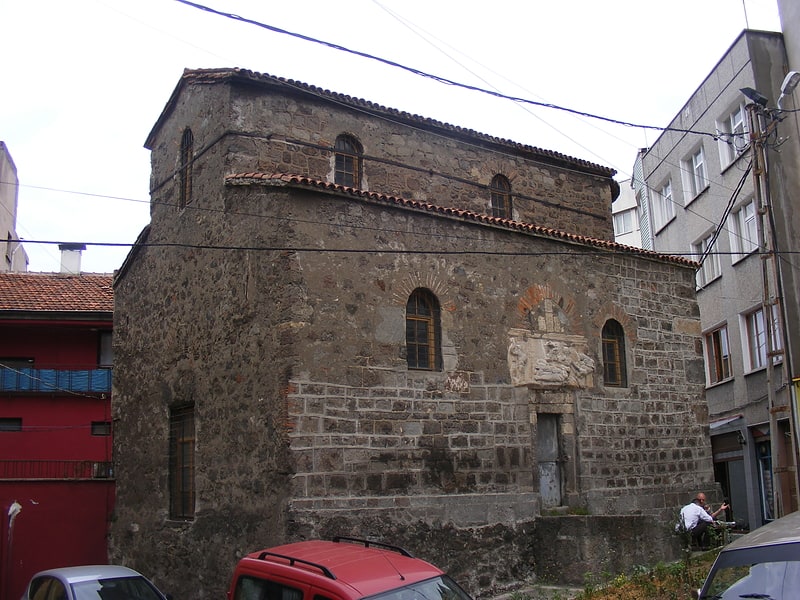
The Church of Saint Anne is one of the oldest churches in Trabzon, Turkey.[9]
Karadeniz Technical University

Also known as: Karadeniz Teknik Üniversitesi
Public university in Trabzon, Turkey. Karadeniz Technical University is a public research university in Trabzon, in the Black Sea Region of Turkey. Established in 1955, it is the fourth oldest university in Turkey. Karadeniz Technical University is a state university institution subject to the Law No. 2547 on Higher Education in Turkey. It is supported mainly by state funds allocated by the Turkish Parliament.
The university has 80 departments, 12 faculties and 6 graduate schools. With 2122 teaching staff and 39,763 students, Karadeniz Technical University is one of the largest universities in Turkey.[10]
Trabzon Barosu

Address: 2 nolu Çömlekçi Mh. Tanjant Yolu No:24 TRABZON, Trabzon